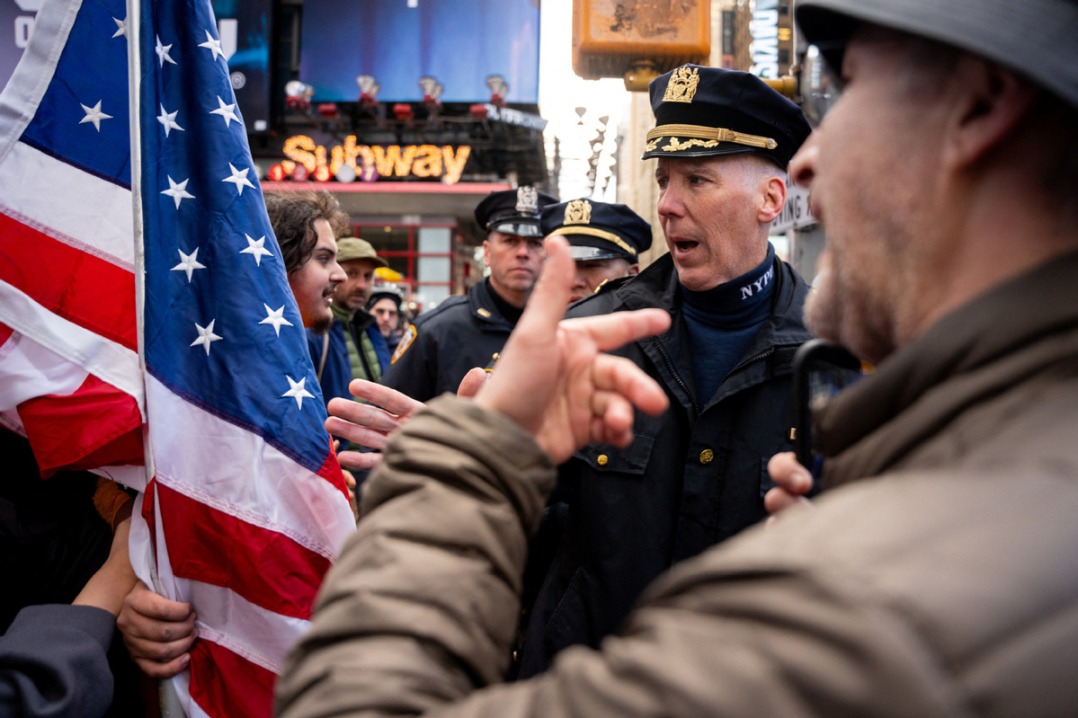US jobless rate falls to 13.3 percent

Employment grew by 2.5 million in May – the largest increase in more than 80 years – and the jobless rate fell to 13.3 percent, sending US stocks higher in early trading Friday.
Analysts surveyed by Dow Jones expected payrolls to fall by 8.333 million, pushing the unemployment rate to 19.5 percent in May from 14.7 percent in April. The unemployment rate was 3.5 percent in February.
The US Labor Department's report was much better than economists expected and may indicate the beginning of an economic turnaround following the nationwide shutdown intended to curb the spread of the coronarvirus.
"Barring a second surge of Covid-19, the overall US economy may have turned a corner as evidenced by the surprise job gains today, even though it still remains to be seen exactly what the new normal will look like," Tony Bedikian, director of global markets at Citizens Bank, told CNBC.
The economy lost a total of 22.1 million jobs in March and April, and regained 2.5 million in May, underscoring the depth of the plunge.
The Labor Department remained cautious.
"These improvement in the labor market reflected a limited resumption of economic activity that had been curtailed in March and April due to the coronavirus pandemic and efforts to contain it," it said in a statement.
May's job gains were the largest one-month increase since 1939 when US industry took initial steps to crank up production to fight World War II.
The leisure and hospitality sectors added 1.2 million workers, about half the increase in employment, the Labor Department reported.
Construction added 464,000 jobs, regaining about half of April's losses. Employment in education and health services increased by 424,000. Retail gained 368,000 jobs after shedding 2.3 million during the shutdown, government statistics showed.
Paradoxically, increased unemployment benefits intended to cushion the economic downturn could slow the recovery.
In a letter to Congress on Thursday, the non-partisan Congressional Budget Office estimated that expanding "enhanced" jobless benefits through January 2021 would mean that five of every six claimants would get more from unemployment insurance than they had earned working.
The program pays workers an additional $600 a week and is scheduled to expire in July. Congress is debating whether to extend it as part of the latest stimulus bill.
The market continues to rally despite 10 nights of nationwide civil unrest following the death of George Floyd, an unarmed black man held face down on the street by police in Minneapolis, Minesota. Apparently, investors are betting the disruptions won't affect the broader economy as it emerges from the government-imposed coronavirus shutdown.
In early trading Friday, the Dow Jones Industrial Average rose 701.98 points, or 2.65 percent, to 26,983.80. The S&P 500 gained 2.02 percent. The Nasdaq Composite added 1.30 percent.
On Thursday, the Dow gained 11.93 points, or 0.05 percent, and closed at 26,281.82. The S&P 500 lost 10.52 points, or 0.34 percent, and closed at 3,112.35. The Nasdaq Composite fell 67.10 points, or 0.69 percent, to 9,615.81.
On Friday, West Texas Intermediate crude futures, the guide for US prices, rose 4.02 percent to $38.92 a barrel. Brent crude, the worldwide benchmark, gained 4.85 percent to $41.94. The price of oil is a proxy for future economic activity. Prices have been rising, suggesting traders believe the economy will rebound and demand for fuel will increase.
An economist at Morgan Stanley said Friday the US probably doesn't want to break the Phase One trade deal with China, despite increased tensions between the world's two largest economies.
Last month, US President Donald Trump said he was "very torn" about continuing the deal, raising concerns about additional tariffs and increased disruption of the world economy.
"Our view is that as long as we have the Phase One deal going on there is no renewed escalation in terms of tariffs, then the global growth projections that we have should be intact," Chetan Ahya, Morgan Stanley's chief economist and global head of economics, told CNBC's Squawk Box Asia.
He said Trump is now focused on the economy and therefore, in his view, wouldn't want to disrupt trade.
Robert Redfield, director of the US Centers for Disease Control and Prevention (CDC), said Thursday that he is "very concerned" because the agency's public health message on the risks posed by the coronavirus isn't "resonating" with the public and the number of cases is rising.
Testifying before the House Appropriations Committee, Redfield said he frequently sees people in Washington without masks. He said many protesters and looters in demonstrations don't wear masks and many of the people who watched the recent SpaceX launch in Florida failed to take basic steps to avoid spreading the virus, including wearing a facemask or practicing social distancing. Trump and vice-president Mike Pence attended the launch but didn't wear face coverings.
Redfield said all 50 states have begun to reopen their economies but "not all" have met White House standards for reopening. "We will continue to message as well as we can," Redfield said.
AstraZeneca hopes to produce 2 billion doses of a coronavirus vaccine, including about 400 million for the US and the UK. Another 1 billion doses will be set aside for low- and middle-income nations.
The company plans to start distributing the vaccine in the US and UK in September or October. The remaining doses will be delivered by early 2021.
In a statement, the company said it had signed a licensing deal with the Serum Institute of India to formulate 1 billion doses for low- and middle-income nations, including 400 million to be delivered by the end of this year.
In early trading, AstraZeneca's shares edged up 0.50 percent.
J.C. Penney, which filed for bankruptcy protection May 15, announced plans to close 154 stores in about 24 states this summer. Closing sales at the stores are expected to last from 10 to 16 weeks.
"Our store optimization strategy is vital is ensuring we emerge from both Chapter 11 and the COVID-19 pandemic as a stronger retailer with greater financial flexibility to allow us to continue serving our loyal customers for decades to come," CEO Jill Soltau said in a statement.
Penney was declared non-essential and forced to temporarily close its stores during the coronavirus outbreak. Sales collapsed and debt grew, pushing the company into bankruptcy.
J. Crew, a retailer of preppy fashion, and Neiman Marcus, a luxury retailer, have also filed for bankruptcy protection following the government-ordered shutdown intended to curb spread of the coronavirus.

































